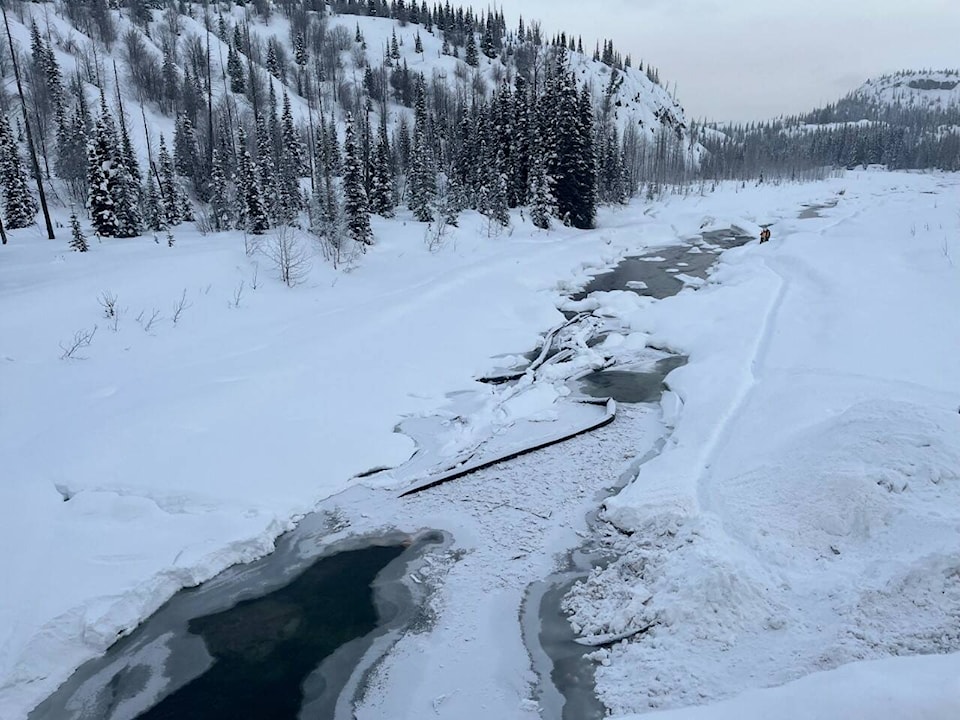The Clore River is now running free again after being diverted so that a trench could be dug across its bottom and Coastal GasLink’s pipeline placed inside, the company said in a statement.
Once placed inside, the trench was then filled in and the diversion works removed.
“We continue to work closely with regulators as we wrap up the remaining work on site,” said Coastal GasLink, adding that the flow was restored Feb. 28.
The work site southeast of Terrace is the latest flash-point between the company, Indigenous groups and others protesting the 680-kilometre long liquefied natural gas pipeline from northeast B.C. to the LNG Canada facility being built in Kitimat.
In January, observations recorded via helicopter overflights organized through the David Suzuki Foundation alleged that the work was damaging fish habitat by creating sediment that would settle down stream and on top of the habitat.
Coastal GasLink denied the allegations which were investigated by provincial regulators and federal fisheries officers.
It said federal fisheries officers, the B.C. Energy Regulator (the new name for the B.C. Oil and Gas Commission) and the provincial Environmental Assessment Office did inspections.
“These demonstrated that work in the river were safely concluded with the highest standards of environmental protection,” Coastal GasLink added.
From bank to bank, the trench area across the Clore was 40 metres long.
The federal fisheries department said its work regarding the Clore is ongoing.
“A site inspection at the Clore River has been performed and Department of Fisheries and Oceans fishery officers are currently awaiting analysis and testing results from Environment and Climate Change Canada (ECCC),” a department release indicated.
Meanwhile, Coastal GasLink says its pipeline is now 84 per cent complete, with the latest status report indicating that pipe placing has finished along two of the pipeline’s eight sections, with much progress being made on the rest.
Latest estimates put the construction cost at $14.5 billion, substantially over original projections in the $6 billion range.



